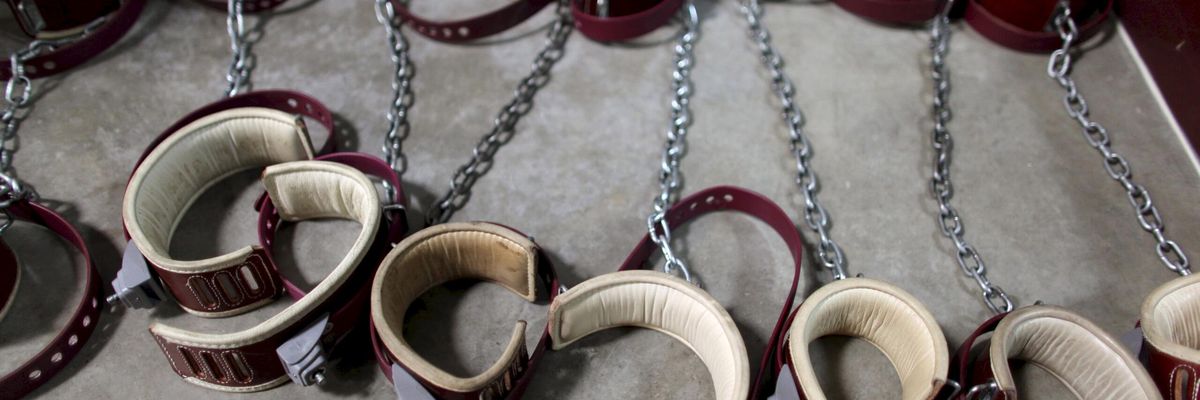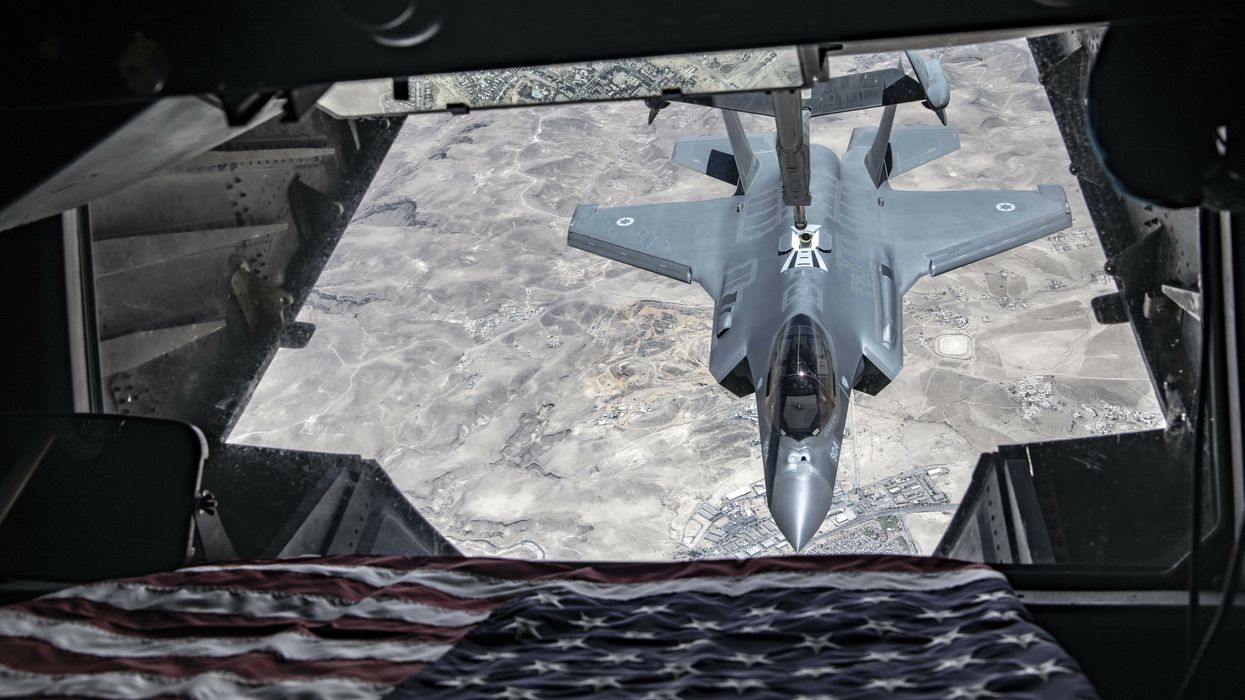The Guardian has reported that a recently-declassified CIA Inspector General’s report from 2008 found that CIA officers at a covert detention site in Afghanistan used a prisoner, Ammar al-Baluch, as a “training prop,” taking turns smashing his head against a plywood wall and leaving him with permanent brain damage.
Baluch is currently one of five defendants before a military tribunal at the U.S. military prison at Guantanamo charged with participating in the planning for the September 11 attacks. The case has been stuck in the pre-trial phase for 10 years, in part because much of the information that the government wants to use against the defendants was collected using torture.
In addition to the five, Mohammed al-Qahtani, known as the potential "20th hijacker," is to be transferred so he can be treated at a rehabilitation and mental health care in his home country of Saudi Arabia. Al-Qahtani was reportedly suffering from mental illness and brain injuries as a young man, which were exacerbated by torture after he was captured in Afghanistan in 2001, and was not deemed fit for trial.
The Guardian article comes amid reporting from the New York Times that lawyers for the five men are in talks with military prosecutors on a plea deal that would have them plead guilty to terrorism in exchange for taking the death penalty off the table, agreeing to sentences of 30 years to life for some, or to life without parole for others, and promising to keep them in Guantanamo, rather than to transfer them to the federal supermax prison in Florence, Colorado.
This all sounds great on the surface of things. But in fact, it represents a failure, perhaps of historic proportions, for the CIA. More than 20 years after the September 11 attacks, these cases are still pending for the sole reason that the CIA carried out a brutal and patently illegal torture program that resulted in confessions that cannot be used against the defendants in a court of law, military or otherwise.
The CIA’s torture program was born out of failure, frustration, and hubris. The September 11 attacks were arguably the worst intelligence failure in American history, and the rule of law was about to go out the window. What also went out the window was any hope of cooperation with the FBI on terrorism-related legal matters.
The CIA didn’t offer its own training class in interrogations, but the FBI, though, had been doing interrogations successfully since the Nuremburg trials in 1946. Their process was actually quite simple: Establish a rapport with the subject. Speak to him respectfully. Once the rapport is established, the prisoner opens up and starts talking. That’s how to collect intelligence. But that’s not at all what the CIA did. They went directly to the use of force. The case of Abu Zubaydah — one of the five currently engaged in plea negotiations — is the clearest example of what the CIA did and how it went wrong so quickly.
After his capture, Abu Zubaydah was taken to a secret prison, where his FBI interrogation began. He was interviewed daily by FBI agent Ali Soufan, who, in that well-known FBI style, established a rapport, built trust, and got Abu Zubaydah talking. And talk he did. There were two critical pieces of intelligence that he gave us.
The first was al-Qaeda’s wiring diagram. We knew, of course, that Osama bin Laden had created the terrorist group with his deputy, Ayman al-Zawahiri, formerly the head of the Egyptian Islamic Jihad terrorist group. We also knew that there was a very bad character out there using the nom de guerre “Mukhtar” who likely had planned the September 11 attacks. But that’s all we knew. We had no idea where around the world al-Qaeda was located, how it operated, how it came up with attack plans, and how it communicated with its leadership. We also didn’t know anything about “Mukhtar.”
Abu Zubaydah explained to Ali Soufan in great detail just how al-Qaeda was constructed. He explained the concept of “cells” and he told us how targets were chosen. He gave us the names and locations of al-Qaeda sleepers around the world, which enabled the CIA to inform its liaison partners overseas, resulting in the arrest of dozens of al-Qaeda operatives and the disruption of countless attacks. Even more importantly, Abu Zubaydah told Ali Soufan that Mukhtar was Khalid Shaikh Muhammad, the mastermind of 9/11 and the planner of an earlier, disrupted, attack called Bojinka. But the CIA didn’t know who Mukhtar was until Abu Zubaydah told Ali Soufan.
By July 2002, though, the CIA was frustrated. It was frustrated that the FBI had primacy in the Abu Zubaydah interrogations and it was frustrated that it had spent millions of dollars coming up with an “enhanced interrogation program” and hadn’t been able to put it into practice. In late July, CIA Director George Tenet went to President George W. Bush and asked him to remove the FBI from the case and to let the CIA take over. For reasons that have never been fully explained, Bush did exactly that. And on August 1, the CIA took over and immediately began torturing Abu Zubaydah.
The original torture plan called for CIA officers to begin with the least harsh method that had been approved by the Justice Department. That was called the “attention grab.” It was where a CIA officer would grab Abu Zubaydah by the shirt or the lapels, give him a shake, and yell “Answer my questions!” The attention grab was supposed to be followed by the “insult slap,” a quick whack across the face, and then by the “belly slap,” which is an open-handed smack on the belly that makes a loud sound, leaves a red mark, and is supposed to be humiliating.
This would be followed by stress positions, where the prisoner would be forced to stand chained to an eye bolt in the ceiling so that he could not get into a comfortable position, couldn’t sit, and couldn’t lay down, causing extreme pain and then muscle failure.
The “cold cell” was then supposed to follow. The prisoner would be stripped naked, chained to the eye bolt in the ceiling again, and his cell would be chilled to 50 degrees Fahrenheit, then every hour, a CIA officer would throw a bucket of ice water on him. The final technique, the one that was supposed to be so awful that it was reserved for last, was waterboarding. That is where the prisoner is tied to a board, his feet are elevated, his face is wrapped with a towel, and water is poured on his face. It causes a feeling of drowning. And in truth, a great deal of water gets down the throat.
Abu Zubaydah did indeed drown during this technique, and he had to be revived by a CIA doctor, according to the Senate Torture Report. The CIA interrogators were supposed to begin with the most basic technique and slowly work their way up to waterboarding. Instead, though, they started with waterboarding.
All of the enhanced interrogation techniques were used on Abu Zubaydah. He was slapped, punched, beaten, subjected to mock executions, and kept locked in a coffin and in a dog cage for weeks at a time. He had his head slammed repeatedly against both plywood and concrete block walls. He was chained to eye bolts and kept awake for more than nine days, long enough for most people to go insane. He was subjected to hypothermia. And he was waterboarded 83 times. Abu Zubaydah had gotten to the point where his interrogator merely walking into the room was enough to make him cry.
Abu Zubaydah is now one of the Guantanamo defendants who apparently are negotiating plea deals. But does it really matter? The CIA told U.S. Senate investigators that Abu Zubaydah will never go free. Never. He’ll die at Guantanamo someday. And when he does, they said, they would cremate him and throw his ashes into the Caribbean. It’ll be as though he never existed.
This doesn’t make America stronger. It makes us weaker. Besides ceding the moral high ground by exhibiting behavior as reprehensible as what the terrorists have done to Americans and others over the years, the CIA’s torture program forced countless analysts to waste countless hours poring through false and worthless information collected through torture. How many Americans were endangered because of that? How many terrorist attacks went forward because of the way the CIA tried to “collect” information?
And worst of all, our government is unable to prosecute its most dangerous prisoners because the CIA violated their constitutional rights. The torture program was wrong from the very beginning. There was no upside.
















